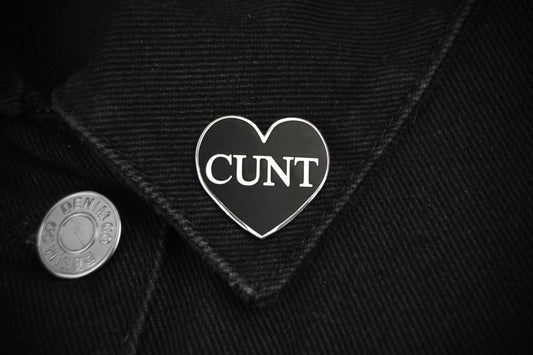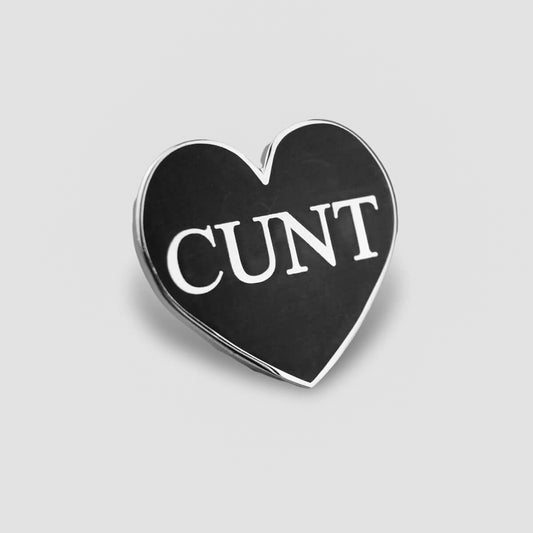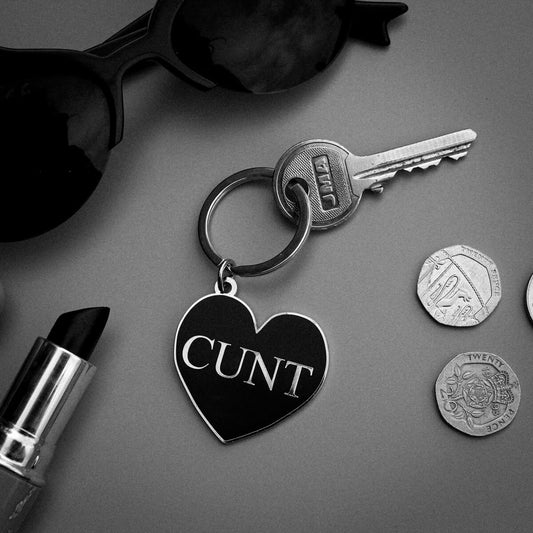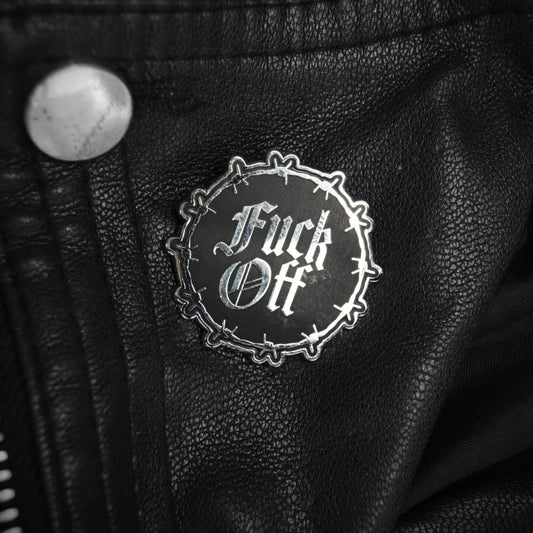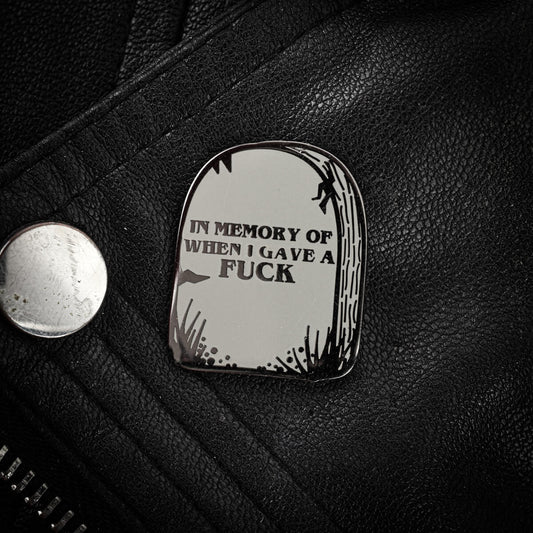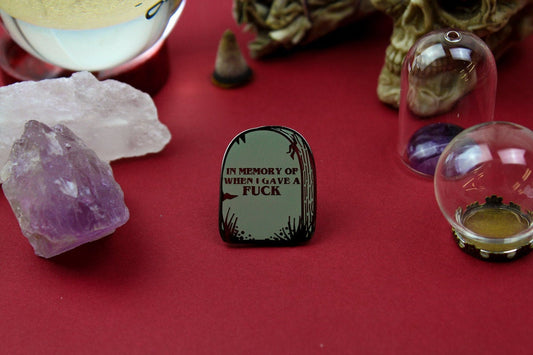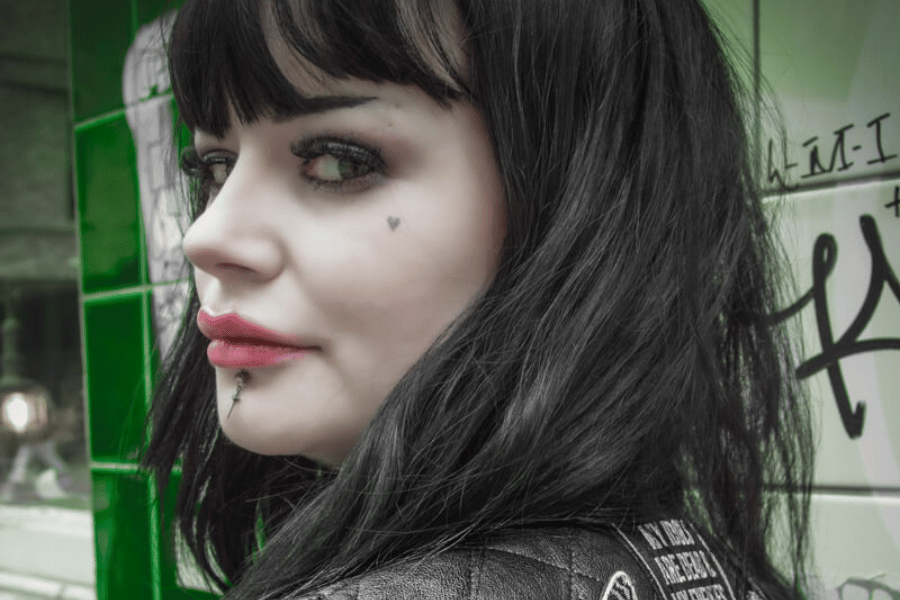
What is Goth Culture?
Share
Goth culture, emerging from post-punk's shadows in the late 1970s, weaves music, literature, and aesthetics into a tapestry of dark beauty and introspection. With haunting melodies, melancholic lyrics, and unique fashion choices, goth culture celebrates individuality and a fascination with the enigmatic.
From the words of Poe and the dark illustrations of Edward Gorey to the sounds of The Cure and Bauhaus, it's a subculture that embraces the unconventional, inviting us to explore our depths and find beauty in the shadows.
Want to know more about all things goth? All your questions shall be answered here…
What Are the Main Characteristics and Styles of Goths?
While goth is a music-based scene, the goth subculture is also characterised by particular aesthetics, outlooks, and a "way of seeing and of being seen".
The Goth scene is all about a distinct style and way of thinking. People in the Goth community have their own unique fashion choices, like wearing black clothes and dark makeup. They also love specific kinds of music, like gothic rock, industrial and darkwave.
Goths express themselves as individuals. They often don't follow the popular trends and like to stand out from the crowd. They are into deep emotions and thinking, often showing care to the world and people around them, by caring for their environment and choosing a vegan diet, for example. Goths usually enjoy art, books, and music that explore dark and mysterious themes.
Their fashion style is usually dark or black clothing and vintage-inspired, with lace, corsets, and of course, gothic accessories. They also love literature and poetry that's about mysterious and spooky things. Goth pop-culture is vast and varied, from traditional Victorian-era Edgar Allen Poe and Bram Stoker, to the emo-inspired Gen Z goth scene with Wednesday Addams. Some Goths are interested in occult and mystical stuff like tarot cards and witchcraft.
Goth culture is open and welcoming to different kinds of people. It's not just about how you look, but about how you feel and think. Goths often make their own clothes and accessories to show off their creativity. Although the limited colour-palette and non-mainstream nature of goth styles might seem restrictive, there’s no limit to the inventiveness and imagination behind goth outfits.
They have a strong sense of community and often come together at events and festivals. Goth culture is a place where people can be themselves, share their interests, and make friends who understand and appreciate their unique style and interests. In a world where, unfortunately, ignorant people might bully or belittle people who dress in the goth style, it’s important that the community show kindness and compassion to each other.
Is Goth a Music Genre?

Yes, Goth is indeed a music genre. Goth music emerged in the late 1970s and early 1980s as a music-based subculture of post-punk and new wave music. It is characterised by its dark and atmospheric sound, introspective lyrics, and often melancholic or emotional themes. Goth music often features haunting melodies, deep vocals, and a blend of electronic and traditional instruments.
Music journalists were among the first to talk about it, such as when the critic John Stickney first used the term "gothic rock" in 1967 after an encounter with Jim Morrison in a dimly lit wine cellar, a space he believed perfectly captured the essence of The Doors' gothic rock style. Although, now that goth music is fully established, it’s debatable whether the Doors are a goth band or not!
Bands like Bauhaus, Siouxsie and the Banshees, The Cure, and Joy Division are considered pioneers of the goth music genre. In September 1979, the phrase was also employed by Joy Division's manager, Tony Wilson, during an interview for the BBC TV show "Something Else." Wilson referred to Joy Division as "gothic," highlighting their departure from the pop mainstream, just before the band's live performance. Their music laid the foundation for what would become a distinct and influential musical movement. Over time, goth music has since branched out into various substyles and subgenres, including darkwave, industrial, and ethereal wave, each with its own unique sound and characteristics.
The Goth genre of music is closely tied to the overall goth subculture, influencing not only fashion styles and aesthetics but also the mindset and values of those who identify as part of the goth community. While the goth subculture has expanded beyond music to encompass a broader range of artistic expressions and interests, the music remains a defining aspect of goth culture.
How Has Goth Culture Evolved Over the Years?
Goth culture has transformed significantly over time, evolving while preserving its fundamental identity. Starting in the late 1970s, it began as a youth culture, with a blend of dark music and even darker fashion, associated with bands like Bauhaus and The Cure. This movement later expanded into a multifaceted subculture with various influences.
Originally linked with gothic rock music, goth culture has branched out into subgenres such as darkwave and industrial, each with distinct sounds. The gothic fashion aspect also diversified, giving rise to styles like cybergoth and romantic goth, which blend Victorian and punk aesthetics with modern twists.
Goth culture has left its mark on mainstream media, influencing literature, films, and art. Iconic works like Anne Rice's "The Vampire Chronicles" and Tim Burton's movies brought gothic themes to a broader audience. In fashion, the goth aesthetic featured in magazines and runways, showcasing its impact on style trends. More than simply black clothing; it’s a versatile way of dressing, that can be minimalist with a simple black wardrobe of super chic statement pieces, or over-the-top maximalist with an abundance of gothic jewellery.
The internet era ushered in a new phase for goth culture, with online communities, forums, and social media platforms connecting goths worldwide. This digital presence has globalised the subculture and enabled the exchange of ideas and inspiration. Early online forum VampireFreaks.com launched in 1999 as a social networking site, where members shared music, art and even found love with others from the goth community. Although more associated with the emo scene, the music-focused nature of MySpace made it a great place for people to discover and share new bands with their Top 8 friends list.
Modern goth culture has embraced inclusivity, welcoming individuals from diverse backgrounds, gender identities, and cultures. This move toward greater representation challenges stereotypes and enriches the subculture.
Goth culture's influence has crossed boundaries, with elements seeping into mainstream music, fashion, and beauty trends. A-list celebrities like Kim Kardashian and Rihanna have both had their gothic fashion era, though we doubt they can list all the Birthday Party b-sides. It has also embraced sustainability and ethical consumption, with an increasing focus on secondhand shopping and eco-friendly choices. Using black and darker colour palettes as a guideline, it’s become easier to get your goth fit fix from charity shops and thrift stores.
Goth culture's evolution showcases its ability to adapt, incorporate new influences, and question norms. While it has grown from its origins, goth culture maintains its core values of self-expression, individualism, and a fascination with the unconventional.
What is the Connection Between Goth and the Gothic Literary Genre?
The connection between goth culture and the gothic literary genre is deeply intertwined, drawing inspiration from similar themes and aesthetics. The term "gothic" originally referred to a style of architecture known for its ornate and dramatic designs, often featuring pointed arches and intricate detailing. This architectural style eventually led to the development of the gothic literary genre, characterised by its dark, mysterious, and often supernatural themes.
When goth culture emerged in the late 1970s as a subculture that embraced a darker aesthetic, it was heavily influenced by gothic literature. The goth movement resonated with the themes found in gothic literature, such as the exploration of the macabre, the mysterious, and the sublime. Both the literature and the subculture share a fascination with the dark side of human nature, the occult, death, the unknown, and the complexities of emotion.
The influence of gothic literature on goth culture is evident in its dress codes and visual aesthetics. Goths often draw inspiration from the attire of gothic characters, featuring dramatic, dark clothing, lace, corsets, and Victorian-inspired accessories. This sartorial expression pays homage to the gothic novels' protagonists and their melancholic and mysterious qualities.
Furthermore, both gothic literature and goth culture celebrate individuality and nonconformity. Characters in gothic novels often defy societal norms, and similarly, goths challenge mainstream conventions through their distinctive style, music, and outlook.
Goth music, particularly gothic rock, often incorporates themes from gothic literature, further cementing the connection. Lyrics frequently explore dark and introspective subjects, echoing the haunting narratives found in gothic novels. Dark Entries by Bauhaus is inspired by Oscar Wilde’s The Picture of Dorian Gray, The Damned have a song called Dr Jeykll and Mr Hyde and there’s a whole compilation album of goth bands performing Edgar Allen Poe themed music (Songs of Terror: A Gothic Tribute to Edgar Allan Poe.)
In essence, the connection between goth culture and the gothic literary genre lies in their shared fascination with the darker aspects of life, their celebration of individualism, and their appreciation for the mysterious and unconventional. This connection has resulted in a dynamic and enduring subculture that continues to evolve while staying rooted in its gothic influences. It could be said that without gothic literature, the goth subculture wouldn’t be what it is today.
What are Some Common Symbols and Aesthetics Associated With Goth?
The Goth scene is rich with symbols and aesthetics that hold deep meaning and reflect its unique identity. Some common symbols and aesthetics associated with goth include:
Black
The colour black is synonymous with goth culture, symbolising darkness, mystery, and rebellion. It's the foundation of goth fashion and often used as a canvas for other elements. Often associated with funeral attire, an all black outfit will strengthen your connection to death and the macabre.
Crosses and Crucifixes
These symbols, often inverted, represent a subversion of traditional religious imagery and can embody a sense of nonconformity and alternative spirituality. The reason for cross symbolism in goth culture is diverse, whether it's the connection with all things vampiric, referring to gothic foundations in classic literature, or simply because it looks cool.
Pentagram
A five-pointed star within a circle, the pentagram is associated with various spiritual and mystical meanings, often used to express a connection to the occult and otherworldly realms. It can also be seen as a sign of protection or strength, and for a subculture that is often marginalised or seen as outcasts, this could help pentagram wearers feel safe.
Ankh
An ancient Egyptian symbol, the ankh signifies life and immortality. In goth culture, it can represent a fascination with the eternal and the esoteric, as well as creating contrast as a symbol of lightness and life among the darkness and death. Egyptian iconography has been tied in with goth culture often, due to its use in occult symbology and usage in goth pop culture, such as Neil Gaiman's The Sandman and vampire movie The Hunger starring David Bowie.
Bats
Bats are a symbol of the night and the mysterious. They are commonly associated with goth aesthetics, appearing on clothing, accessories, and artwork, probably due to their connection with vampirism, and maybe just because, for something that sucks blood (ok that's just Vampire Bats - but they're the gothiest of all bats!), and only comes out at night, they’re super cute (yes, goths love cute things too!). "Baby Bat" is a phrase commonly used by elder Goths to refer to young enthusiasts (teens or even pre-teens) venturing into the subculture and embarking on their eerie journey.
Cobwebs and Spiders
These motifs evoke a sense of abandoned grandeur and the passage of time, contributing to the overall atmosphere of the goth aesthetic. Spiders are often found creating their own spaces in the darker corners of the world. Sound familiar?
Roses
While roses are often linked with romance, in goth culture they can also symbolise beauty amid darkness and fragility within strength. Roses are often seen paired with the statement “memento mori,” Latin for “remember that you [have to] die.”
Cemeteries and Gravestones
Representing mortality and a fascination with the afterlife, cemetery imagery is frequently present in goth art and fashion. On a practical level, cemeteries are often a place for tranquillity and a space to appreciate the artwork and aesthetic qualities of old Victorian tombstones. Please be mindful if you want to visit a cemetery without mourning someone who has passed - be aware that there might be those around you who are doing just that, and these people deserve peace and respect.
Victorian and Edwardian Fashion
Influenced by historical periods known for their dramatic styles, goth fashion often includes lace, corsets, top hats, and other elements from the Victorian and Edwardian eras. The Victorian traditions of mourning (extended periods of remembering the dead) and their general fascination with all things death, was reflected in their dark and flamboyant wardrobe, which has now been embraced by goth fashion.
Dark Makeup
Dark eyeliner, deep lip colours, and pale foundation are signature elements of gothic makeup, contributing to a distinct and striking appearance. A simple way to emphasise your facial features, it can be as easy as black eyeliner and lipstick, or as complex as an intricate Siouxsie Sioux-inspired graphic eye makeup.
Macabre Artwork
Artwork featuring skulls, skeletons, and other morbid imagery is commonly associated with goth culture, reflecting its fascination with death and decay. See Edward Gorey.
Spooky Landscapes
Images of misty forests, haunted castles and moonlit nights create an eerie and evocative atmosphere that resonates with goth sensibilities. Gothic culture is also often inspired by the cinematography of b-movie horrors or the illustrations from classic vampire themed literature.
Occult Symbols
Symbols like the all-seeing eye, pentagrams, and ouroboros (a serpent eating its own tail) are often used to convey connections to esoteric knowledge and hidden truths. Goths might embrace the beliefs shared by their favourite artists and musicians who are often open to exploring the occult as part of their creative inspiration. These symbols are frequently associated with expanding your mind and developing personal growth, as opposed to the common misconception that they’re satanic or evil.
Music Influences
Visual representations of bands and music genres within goth, such as post-punk, new wave, and darkwave, contribute to the subculture's overall aesthetics. From wearing a band tee or styling your black hair into the classic Robert Smith style backcombed birds nest, music is the most frequently used reference point for defining the modern goth look.
Literary References
Quotes, imagery, and themes from gothic literature and poetry, like Edgar Allan Poe's works, have a significant presence in goth culture.
These symbols and aesthetics collectively form the visual language of goth culture, expressing its philosophical depth, artistic expression, and embrace of the mysterious and unconventional.
You can find a huge choice of jewellery and accessories featuring these emblems, from pentagram patches to bat necklaces on our website.
What are the Subcultures Within the Goth Community?
Within the expansive and diverse realm of the Goth community, various subcultures have flourished, each embodying its own unique style, attitude, and interests. It’s a perfect way to be yourself and express your uniqueness, while finding your tribe! These subcultures provide individuals with the opportunity to find their niche and express themselves authentically. Here are some subcultures within the goth community:
Traditional Goths
Rooted in the origins of Goth culture, traditional, or 'Trad Goths' embrace the classic Victorian and Romantic aesthetics. Their attire often includes elaborate lace, corsets, and period-inspired clothing. Dark, elegant, and poetic, they draw inspiration from Gothic literature and architecture.
Cyber Goths

CC BY 2.5 nl, Link
Embracing a futuristic and cyberpunk vibe, the cyber Goth aesthetic incorporates neon colours, PVC clothing, and cyber accessories. They often accessorise with neon hair extensions, goggles, and platform boots. This subculture seamlessly blends technology with darkness. Pioneers of the cyber goth movement are one of our favourite brands Cyberdog, who’s blacklight glowing window lit up the streets of Oldham Street in Manchester at Afflecks, a place where Occult calls home today!
Romantic Goths
Romantic Goths are all about evoking a dreamy and ethereal atmosphere. They favour flowing dresses, lace, and softer colours. Their style leans towards a fantasy-inspired look, drawing from literature, fairy tales, and mythology. Think vampires, thrills, petticoats, and velvet.
Punk Goths

Combining the edginess of punk with the aesthetics of Goth, punk Goths embrace a rebellious spirit. Leather jackets, band patches, and combat boots are common elements of their style. They often incorporate elements of DIY culture and political activism. The goth community we know and love now, might not be what it is today without the preceding punk movement. Fans of Siouxsie and the Banshees, the Damned and Joy Division straddle the line between punk and goth.
Victorian Goths
As the name suggests, Victorian Goths immerse themselves in the elegance of the Victorian era. High-necked blouses, frock coats, and top hats are staples of their wardrobe. Their look is refined, with a focus on vintage fashion. Must have accessories include black veils, lace umbrellas and intricate choker necklaces.
Nu Goths
Embracing a more modern and minimalist approach, Nu Goths incorporate elements of high fashion, streetwear, and minimalistic design. Black remains a dominant colour, but their style can be more understated and contemporary. Nu goth looks could appear simple but be meticulously put together, eg. black leggings and vest tops layered with mesh or fishnet and paired with symbolic jewellery and beautifully applied makeup.
Pastel Goths
Challenging the traditional all-black aesthetic, pastel Goths incorporate pastel hues into their style. This subculture blends the darkness of Goth with the whimsy of pastel colours, resulting in a unique and eye-catching look. A super cute style inspired by the streetwear of harajuku, gothic lolita and the fusion of cute and morbid.
These subcultures within the broader Goth community showcase the versatility and creativity of the culture. Each offers a distinct way for individuals to express themselves while remaining connected to the overarching themes of darkness, individuality, and self-expression.
What is the Goth Lifestyle and Philosophy?
The Goth lifestyle is all about embracing individuality, expressing creativity, and celebrating the beauty in darker aspects of life. It's a philosophy that values personal uniqueness, and Goths often stand out due to their distinct clothing, makeup, and style choices that go against mainstream norms.
A core principle is the appreciation for aesthetics that are often characterised by a romantic and mysterious allure. This extends to their music preferences, home decor, and the way they engage with the world around them. Creativity is highly encouraged, fostering an environment where self-expression is cherished.
Inclusivity and acceptance are vital components of the Goth community. Despite their unconventional appearance, Goths emphasise treating everyone with respect, regardless of their background, gender, or sexual orientation. This inclusivity is a reflection of their commitment to creating a supportive and diverse community.
Goths also tend to be intellectually curious, exploring a wide range of topics like literature, history, and the arts. This curiosity often extends to the exploration of the "shadow" side of human nature – the complex emotions and vulnerabilities that make us who we are.
Nature and the mysteries of life hold great significance to many Goths. This can lead to an interest in pagan traditions, occult beliefs, folklore, and a desire to be environmentally conscious. They have a deep respect for nature and an open-minded approach to the unknown.
Music plays a pivotal role in the Goth lifestyle. Genres like gothic rock, darkwave, and post-punk resonate deeply with Goths, connecting with their emotional and intellectual aspects. Music becomes a way to express their feelings and connect with others who share similar sensibilities.
Goth culture is a way of life that honours uniqueness, creativity, and the intriguing aspects of life that might be considered unconventional. It's a celebration of authenticity, embracing both the light and dark sides of existence while fostering a diverse and supportive community.
Who Are the Most Famous Goth Icons and Figures?

Some of the most famous icons and figures in the Goth culture have left a lasting impact on the movement. Some goth icons have made so much of an impact in their niche community, that they have managed to break out into the mainstream and make it into the minds of the public conscious, raising the respect and love for the goth community. Here are a few notable individuals who have become synonymous with Goth:
Siouxsie Sioux
As the lead singer of Siouxsie and the Banshees, Siouxsie Sioux's distinctive voice and unique style have made her an enduring Goth icon. Her dramatic makeup, dark fashion, and powerful performances have left a significant mark on the genre. Her spellbinding songwriting, inspired by everything from David Bowie to The Sex Pistols, led to hits including Happy House, Spellbound (used recently in the 4th season of Stranger Things) and a great reworking of Beatles classic Dear Prudence.
Robert Smith
The frontman of The Cure, Robert Smith's melancholic vocals and signature big hair have made him an iconic figure in the Goth and alternative music scenes. The band's music, often exploring themes of love and introspection, has resonated deeply with Goths around the world. In a fleeting moment of 1989, The Cure found themselves at the pinnacle of global fame, becoming the biggest band in the world. During that time, they headlined a packed performance at Wembley Stadium and a massive show at New York's Giants Stadium, drawing a crowd of 44,000 (with 30,000 tickets selling in just a day). Smith later expressed a somewhat sombre sentiment, saying, "It was never our intention to become as big as this."
Peter Murphy
Known as the "Godfather of Goth," Peter Murphy's role as the lead vocalist of Bauhaus contributed to defining the Goth sound. Formed in 1978, Bauhaus are often credited as being the establishing act of the goth movement. His deep, haunting voice and the band's influential hit "Bela Lugosi's Dead" (also featured in iconic goth film The Hunger starring David Bowie) helped shape the genre's trajectory.
Lydia Lunch
An artist, musician, and writer, Lydia Lunch's avant-garde work has challenged boundaries and passed beyond the realms of the Goth aesthetic. Her spoken word performances and collaborations with various artists have left an indelible mark on alternative culture. Performing with no-wave artists like James Chance and working with ambient producer Brian Eno, Lunch maintains the goth sensibilities of macabre and darkness while subverting the traditional style of the genre.
Eva O and Gitane Demone
These sisters are prominent figures in the Goth and Deathrock scenes. Eva O, as part of Christian Death, and Gitane Demone, as part of Pompeii 99 and Christian Death, contributed to shaping the sound and style of the movement. Seen as a seasoned presence and deemed "one of the most captivating personalities within the American Gothic scene," Eva O has wielded a notable impact on the burgeoning death rock movement. This achievement earned her the moniker "Queen of Darkness," as bestowed by both the media and her admirers. Gitane DeMone’s career spans more than 40 years, from forming post-punk band Pompei 99 in 1981, to playing keyboards for Christian Death.
Rozz Williams
A co-founder of Christian Death and later a solo artist, Rozz Williams played a significant role in shaping the Deathrock subgenre of Goth. His intense performances and exploration of dark themes have influenced many Goth musicians and fans. A career inspired by drag, Satanism and French surrealism, Williams actually held a strong aversion to the "goth" tag and made deliberate efforts to distance himself from it in the 1980s and 1990s. He achieved this by directing his attention towards punk rock, hard rock, cabaret, and spoken word music.
Andrew Eldritch
As the frontman of The Sisters of Mercy, Andrew Eldritch's deep voice and the band's fusion of gothic rock and new wave elements have left an indelible mark on the Goth music landscape. Like Peter Murphy, Eldritch has also been labelled the “Godfather of Goth,” a title which he often rejects. Whilst the band enjoys a considerable fan base with overlapping interests in so-called dark culture, the Sisters of Mercy consider themselves first and foremost a rock band. They have discouraged their association with "goth" via regular public statements in the press, and stipulations in their standard contract riders. Nevertheless, this has not stopped them from regularly appearing at festivals where this music is featured, such as M'era Luna.
These icons and figures have not only contributed to the musical landscape of Goth but have also inspired countless individuals to embrace the culture's unique style, philosophy, and aesthetics. Their influence continues to resonate with Goths around the world, shaping the movement's evolution over time.
Are There Any Events or Festivals Dedicated to Goth Culture?

Absolutely, the realm of goth culture is rich with events and festivals that not only celebrate its unique aesthetics but also provide a platform for enthusiasts to immerse themselves in a world of dark creativity and camaraderie. From hauntingly atmospheric gatherings to electrifying music showcases, these events capture the essence of goth culture in all its diverse facets.
One of the most iconic events in the goth calendar is the Whitby Goth Weekend. Set in the charming coastal town of Whitby in North Yorkshire, UK, this biannual event draws goths, punks, and alternative subculture enthusiasts from around the world. During the beginning of WGW in 1994, Whitby was selected due to its ties to Bram Stoker's Dracula (in the book, Dracula leaves Transylvania for England and plagues the seaside town), although the decision was likely influenced more by the existing acceptance and support from the local community and businesses, rather than any inherent romantic notions about the place. With its picturesque backdrop of cobbled streets and the historic Whitby Abbey, the festival becomes a haven for all things dark and mystical. Attendees don their most elaborate and imaginative outfits, ranging from Victorian-inspired ensembles to more modern cyberpunk creations. The Whitby Goth Weekend serves as a melting pot of fashion, music, and art, and it's a must-visit for anyone curious about goth culture.
On a larger scale, festivals like Download Festival and Bloodstock Festival have also become significant stages for goth culture. While these festivals are renowned for their focus on rock and metal music, they welcome the diversity of subcultures within the broader alternative scene. Attendees can often spot goth fashion elements amidst the sea of black band merchandise. These festivals offer a unique opportunity for goth enthusiasts to revel in the powerful music that resonates with the subculture while being surrounded by like-minded individuals.
What's fascinating about these events is their ability to bridge the gap between goth culture and the larger alternative community. They showcase the interconnectedness of various subcultures and their shared love for self-expression, music, and artistic innovation. As the goth scene continues to evolve, events like these remain essential touchstones that allow individuals to connect, celebrate, and contribute to the ever-evolving narrative of goth culture. Whether it's the intimate ambience of Whitby Goth Weekend or the grandeur of major festivals, each event contributes to the vibrant tapestry of goth culture's history and ongoing evolution.
What Are the Misconceptions About Goth?
Goth culture, like many alternative styles and subcultures, has been plagued by a variety of misconceptions over the years. These misconceptions often arise from stereotypes and limited understanding, ultimately distorting the true essence of what goth culture is all about.
One of the most prevalent misconceptions is the association of goth culture with the occult and satanism. This couldn't be further from the truth. While goths may appreciate the aesthetics of darkness and mystique, it's important to understand that their interests in these elements are rooted in artistic expression and personal aesthetics rather than religious beliefs. Goth culture draws inspiration from various sources, including literature, music, and history, without inherently promoting or practising satanism.
Another common misconception is the assumption that all goths are depressed or drawn to negativity. This stereotype unfairly oversimplifies the emotional range of individuals within the goth subculture. While some goths may embrace melancholic themes in their artistic expression, it's crucial to recognise that goth culture celebrates a broad spectrum of emotions, just like any other subculture.
The idea that all goths just want to be alone and are antisocial people is another misconception that needs dispelling. Goths, like anyone else, have varied social preferences. While some may find solace in introspection, many goths are actively engaged in social activities, events, and gatherings that foster a sense of community and connection.
Goth culture is complex and multifaceted, and these misconceptions only serve to undermine its richness and diversity. It's important to approach goth culture with an open mind, seeking to understand its true essence rather than relying on stereotypes. By dispelling these misconceptions, we can appreciate the creativity, community, and individuality that define the goth subculture.
How Has Goth Influenced Art, Fashion, and Music?
Goth culture has left an indelible mark on various aspects of creativity, profoundly influencing art, fashion, and music. Its impact can be seen in the way it has inspired and shaped these realms over the decades.
In the realm of music, goth culture birthed a sonic landscape that continues to resonate today. As already mentioned, bands like The Cure and Bauhaus laid the foundation for goth music with their haunting melodies and introspective lyrics. Their influence has reverberated through time, shaping the sounds of contemporary artists. These modern artists like Interpol, with their brooding post-punk revival sound, and Nine Inch Nails, with their industrial edge, have then drawn inspiration from the gothic ethos started by those pioneer artists. The intensity and emotional depth of Savages' music, reminiscent of the goth movement's introspective nature, further showcase the enduring influence of goth on modern soundscapes.
Goth's impact on fashion is equally profound. The movement birthed its own unique fashion sensibility characterised by dark, dramatic aesthetics. This "haute goth" style has transcended subculture boundaries, influencing designers of global renown. The late Karl Lagerfeld, a fashion icon himself, infused elements of gothic grandeur into his creations for Chanel and Fendi, often incorporating dark palettes and intricate detailing. Alexander McQueen's designs were imbued with a sense of romantic darkness, combining Victorian influences with avant-garde flair. Jean Paul Gaultier, known for his boundary-pushing designs, has also integrated gothic elements into his collections, showcasing corsets, lace, and decadent textures reminiscent of the subculture's signature style.
The enduring legacy of goth styles in the world of art is equally evident. The movement's themes of darkness, mortality, and mysticism have inspired artists across mediums. Painters like Mark Ryden and Gottfried Helnwein have channelled gothic aesthetics, evoking emotional depth through their works. Photography, too, has been influenced, with artists capturing the ethereal and enigmatic aspects of the subculture.
Goth culture's influence on art, fashion, and music is profound and far-reaching. Its impact is not confined to its origins but continues to evolve and inspire, shaping the creative landscape of today and the future. From the haunting melodies of iconic bands to the dramatic designs of renowned fashion houses, goth's essence remains an enduring muse for those who seek to infuse their work with darkness and beauty.
What Role Does Goth Play in Contemporary Culture?
Goth culture, with its distinctive aesthetic and ethos, continues to have a fascinating and multifaceted role in contemporary society. Beyond its foundational influence, goth culture has permeated various forms of media, reflecting its enduring relevance and resonance.
In popular animated television, "South Park" introduced the character of a goth kid who satirically embodies certain aspects of goth culture while providing a comedic commentary on societal stereotypes. Similarly, "The IT Crowd" included Richmond Avenal, a recurring goth character portrayed by Noel Fielding, whose exaggerated gothic persona serves as a humorous foil to the show's tech-focused setting.
Streaming giants like Netflix have also embraced goth culture, showcasing its evolution and adaptation to the modern context. Series like "Wednesday," centred around the Addams Family character Wednesday Addams, offer a contemporary take on the traditional goth aesthetic, attracting new generations of fans. Then there's the "Chilling Adventures of Sabrina", which seamlessly incorporates goth style fashion and themes, allowing the character Sabrina to explore her magical abilities while embracing her gothic identity.
Furthermore, the influence of goth culture extends to the realm of cinema. The 1996 film "The Craft" delves into the lives of outcast teenage girls who explore witchcraft, with one character, Nancy Downs, epitomising goth style. This portrayal demonstrates the interplay between goth culture and themes of rebellion and empowerment.
The contemporary role of goth culture is not confined to fictional representations; it's also a means of personal expression and empowerment for individuals. It remains a space for those who find solace in its introspective themes, dark beauty, and sense of belonging. In a world that constantly evolves, goth culture endures by adapting to new mediums while staying true to its roots.
Goth culture continues to captivate contemporary culture through its presence in media, allowing for exploration and reinterpretation of its timeless allure. Whether as a satirical character in a cartoon or as a source of empowerment for individuals, goth culture remains a compelling force that bridges past and present, darkness and creativity.
Is Goth Associated With Any Particular Religious or Spiritual Beliefs?
Goth culture is not intrinsically linked to any specific religious or spiritual beliefs. However, its aesthetic choices often draw inspiration from a variety of sources, including occult iconography and symbolism. This incorporation of diverse imagery contributes to the subculture's enigmatic and eclectic nature.
While goth culture doesn't prescribe to a singular religious framework, it has frequently embraced elements of the occult and the mysterious. This fascination with the esoteric has led to the integration of symbols, such as pentagrams, ankh crosses, and other mystical imagery, into gothic fashion, art, and music. These symbols are often used for their aesthetic and evocative qualities rather than as indicators of religious affiliations.
Furthermore, goth culture has been known to incorporate Christian symbolism into its aesthetic choices. Crosses and crucifixes, for example, are common motifs in goth fashion and jewellery. These religious symbols may be used in an inverted or altered manner, challenging traditional associations and lending an air of subversion to the subculture's visual language.
These aesthetic choices may not be indicative of goth individuals' personal religious or spiritual beliefs. Instead, they reflect a creative exploration of darkness, mystique, and cultural references. The use of such symbols is simply a form of artistic expression and a way for goths to convey their unique identity.
Goth culture's ability to blend a wide array of imagery without being bound by specific religious tenets is a testament to its open and adaptable nature. By drawing from various sources, people in the goth culture created a visually rich and intellectually engaging subculture that remains both enigmatic and inviting.
Do Goths Have Specific Ethics and Values?
Goth culture encompasses a wide spectrum of individuals with diverse backgrounds and perspectives, making it challenging to pinpoint specific ethics and values that universally define the subculture. However, there are certain overarching principles that often resonate within the goth community.
One notable value is individuality and self-expression. Goths tend to value the freedom to express themselves authentically, embracing unique styles, interests, and identities. This celebration of individuality often extends to an open-mindedness toward different perspectives and lifestyles, fostering an accepting and inclusive community.
Goth culture is also often associated with an appreciation for the arts, particularly the darker and more introspective aspects of creativity. Many goths have a passion for literature, music, visual arts, and other forms of artistic expression that delve into themes of beauty, melancholy, and the unknown.
Furthermore, goths often gravitate toward an intellectual curiosity. The subculture's affinity for literature, history, and philosophical discussions underscores a deeper engagement with ideas and concepts beyond the surface. This intellectual curiosity is often accompanied by a love for the macabre, the mysterious, and the fantastical.
Empathy and compassion also find their place within goth culture. Many goths are drawn to social justice issues, advocating for inclusivity, acceptance, and equality. This stems from the subculture's tendency to empathise with those who are marginalised or misunderstood, reflecting the subculture's ethos of embracing diversity.
While there are these common themes, it's important to remember that goth culture is not monolithic and individuals within the community may hold differing values. What unites goths is their shared passion for creativity, aesthetics, and a sense of belonging within a supportive community. As goth culture continues to evolve, its values adapt and expand, reflecting the changing perspectives and experiences of its members.
What Are Some Goth-themed Books, Movies, and TV Shows?
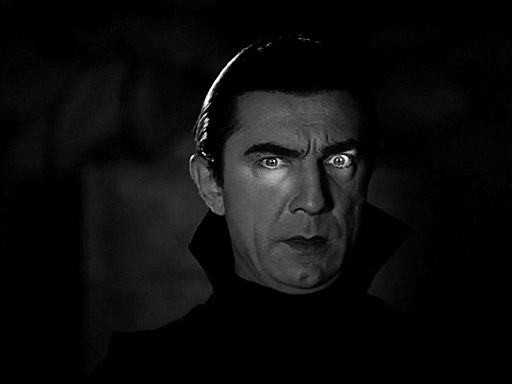
Goth culture finds its artistic essence echoed in a plethora of books, movies, and TV shows that explore dark, mysterious, and introspective themes. In the realm of literature, classic works like "Dracula" by Bram Stoker, Neil Gaiman's "Sandman" graphic novel series, and Mary Shelley's "Frankenstein" are go-to choices. Stories such as "The Strange Case of Dr. Jekyll and Mr. Hyde" and Edgar Allan Poe's "The Fall of the House of Usher" delve into psychological and macabre territory, resonating with goth sensibilities. Anne Rice's "Interview with the Vampire" series also captivates people with its alluring blend of darkness and immortality.
When it comes to the silver screen, the goth aesthetic has left its mark on films like "The Hunger," "The Crow," and Tim Burton's visually captivating creations such as "Edward Scissorhands" and "The Nightmare Before Christmas." Movie adaptations of gothic literary classics, such as "Dracula" and "Interview with the Vampire," add to the cinematic allure. Cult favourites like "Donnie Darko" and the vampiric allure of "The Lost Boys" further capture the essence of the subculture.
Goth culture also extends its appreciation to classic horror films like "The Shining" and "Hellraiser," demonstrating a fascination with the eerie and the unsettling, even if these films don't embody a goth aesthetic per se.
In the realm of television, shows like "American Horror Story" delve into the macabre with their intricate storytelling. The iconic "Addams Family" embraces a darkly comedic gothic sensibility, while anime series like "Black Butler" offer a fusion of gothic themes and supernatural intrigue. Gothic enthusiasts also often have a soft spot for shows like "The Twilight Zone" and "Twin Peaks," which, while not explicitly goth in appearance, share a common affinity for the mysterious and the uncanny.
Goth culture's influence is palpable in a diverse range of literary, cinematic, and television works. Whether through classic gothic novels, visually enchanting films, or series that delve into the surreal, these creative expressions resonate with the subculture's intrinsic fascination with darkness, beauty, and the enigmatic.
Looking to expand your goth wardrobe? Shop goth jewellery and gothic accessories at Occult Patches & Pins.
